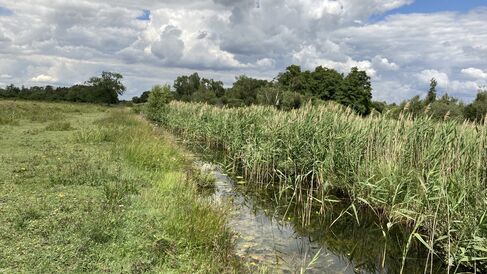
New paper discusses how overlooked water channels shape nature, people, and the future of our landscapes
A Multidisciplinary Approach
Tackling environmental challenges requires perspectives that span the natural sciences, social sciences, and humanities—and this collaboration exemplifies that approach. Led by Mike Peacock from the University of Liverpool, Liverpool and Chelsea Clifford from the Virginia Institute of Marine Science, USA, the paper brings together contributors from 37 institutions across 12 countries, forming a strikingly multidisciplinary coalition. Ecologists, soil scientists, hydrologists, archaeologists, geographers, agronomists, and communication scholars all contribute, offering expertise in areas ranging from climate and sustainability to land management, freshwater systems, and long-term human–environment interactions. This breadth highlights both the complexity of landscape regeneration and the innovative potential of bridging disciplines to develop holistic solutions.
Bringing hidden features to light
When we picture rivers, wetlands, or canals, it’s easy to forget the thousands of smaller water channels that crisscross our countryside. These are ditches—linear features designed to move or store water where people need it. They’ve been used for centuries for irrigation, drainage, transport, and as boundary markers. Yet despite being everywhere, ditches have often been overlooked in research and policy.
A new paper in Nature Communications Earth & Environment — Lines in the Landscape — co-authored by Hamid Rahimi, Chris Evans, and Laurie Friday of the Centre for Landscape Regeneration, puts ditches back into focus. The research shows that far from being minor features, ditches play a major role in shaping ecosystems, soils, climate processes, and even human societies.

Why ditches matter
The study highlights how ditches have both positive and negative impacts:
- Positive: They can provide habitats for wildlife, store water for farming, and trap nutrients that might otherwise be lost downstream.
- Negative: They can also release greenhouse gases, spread pollutants, and alter natural water flows.
The message is clear: ditches are multifunctional. They influence biodiversity, carbon and nutrient cycles, and the way we manage land and water.
“We tend to take ditches for granted, but they connect almost every part of our managed landscapes. Recognising their importance is vital for sustainable land use.”
— Lines in the Landscape
Local Landscapes, Global Relevance, Future Solutions
Ditches exist on every continent, from rice paddies in Asia to drained peatlands in Europe and North America. Understanding their role in the landscape affords us the opportunity to think differently about how we manage water and land in the face of climate change and biodiversity loss. While contributions from the CLR—including fieldwork on the hydrology and biodiversity of ditches—reflect the UK’s fenlands and farmed landscapes, the paper’s findings offer a global perspective.
The authors call for future management that enhances the beneficial roles of ditches—such as providing refuge for species and reducing nutrient pollution—while limiting their downsides, like emissions and pollutant dispersal.
For farmers and land managers, this could mean rethinking ditch maintenance, designing them to balance drainage with habitat value. For policymakers, it means recognising ditches as part of the infrastructure of climate and biodiversity strategies. And for researchers, it opens a new area of study—turning our attention to features of the landscape that have long been ignored.
Ongoing CLR Research in This Area
Ditches play a crucial role in supporting wildlife, managing water, and shaping the landscapes of the Fenlands. The CLR is exploring how fenland agriculture and paludiculture—the productive use of wet peatlands—can enhance soil health, improve water quality, and support biodiversity, all while keeping landscapes productive and climate-resilient. This research also serves as a hands-on learning opportunity for the next generation of environmental scientists through initiatives like the Future Leaders Programme, where undergraduates gain field experience contributing to real-world projects
Outputs such as the Fens Land Management Survey examine how ditch management interacts with wider farming practices, highlighting the balance between sustainable land use, farmers’ needs, and the needs of local communities.
The CLR also brings its research into the community, connecting pupils and local residents with the Fen landscape and the science behind it. For example, pupils from Fenland primary schools created artwork inspired by what they learned from scientists and archeologists about the Fens in 'The World Beneath Our Feet', and the CLR participated in Cambridge Zero’s Community Day, offering hands-on activities that showcase how ditches support both local ecosystems and the communities that rely on them. These are just two examples of our wider outreach and community engagement
By connecting local Fenland research to broader environmental challenges, the CLR demonstrates lessons that are relevant for land and water management around the world.
Read more
- The full paper in Nature Communications Earth & Environment: Lines in the Landscape
- Learn about CLR’s research on our Research & Publications page
This work was led by Chelsea Clifford and Mike Peacock and was carried out by an international team, with contributions from members of the Centre for Landscape Regeneration (CLR), based in the Conservation Research Institute (CRI). We congratulate Hamid Rahimi, Chris Evans, and Laurie Friday on their role in highlighting the value of these overlooked but vital features in our local landscape.
